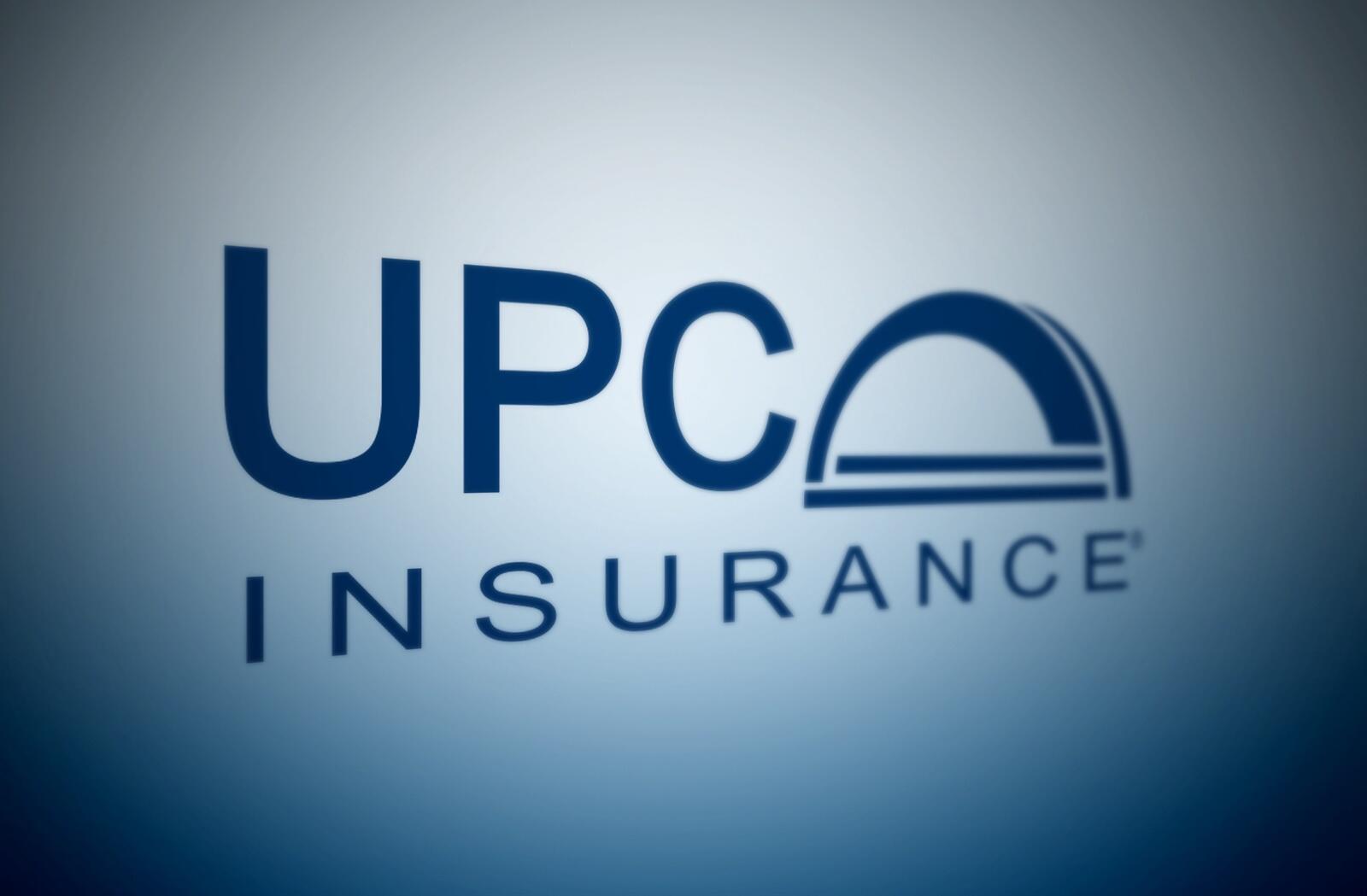Home>Finance>Capital Structure Is How A Company Is Financed Through


Finance
Capital Structure Is How A Company Is Financed Through
Modified: December 29, 2023
Discover how a company's capital structure is intricately tied to its financing options and explore the role of finance in shaping a firm's financial decisions.
(Many of the links in this article redirect to a specific reviewed product. Your purchase of these products through affiliate links helps to generate commission for LiveWell, at no extra cost. Learn more)
Table of Contents
- Introduction
- Definition of Capital Structure
- Importance of Capital Structure
- Factors Affecting Capital Structure
- Types of Capital Structure
- Debt vs. Equity Financing
- Impact of Capital Structure on Financial Performance
- Considerations in Determining an Optimal Capital Structure
- Case Studies on Capital Structure Decisions
- Current Trends and Challenges in Capital Structure Management
- Conclusion
Introduction
The capital structure of a company refers to how it is financed through a combination of debt and equity. It plays a crucial role in the financial stability and growth of a business. Capital structure decisions are fundamental to strategic financial management, as they determine the long-term financial health and risk profile of a company.
Essentially, capital structure reflects the proportion of debt and equity used to finance a company’s operations and investments. Debt financing involves borrowing money from external sources, such as banks or bondholders, while equity financing involves raising funds by issuing shares of ownership to investors. The specific blend of debt and equity in a company’s capital structure impacts its overall financial leverage, cost of capital, and risk profile.
The importance of capital structure cannot be overstated. It directly affects a company’s ability to raise capital and generate profitable returns for shareholders. A well-structured capital base can enable a company to access funding at favorable interest rates and improve its overall financial performance. On the other hand, a poor capital structure can lead to excessive interest costs, financial instability, and even bankruptcy.
Several factors influence a company’s capital structure decisions. These include its risk appetite, industry dynamics, availability and cost of capital, regulatory environment, and growth prospects. The optimal capital structure varies from company to company, depending on its unique circumstances and strategic goals.
Definition of Capital Structure
Capital structure refers to the mix of debt and equity that a company uses to finance its operations and investments. It represents the long-term financial framework of a business and plays a significant role in determining its financial stability, risk profile, and ability to generate returns for shareholders. The decision on how to structure the capital base is a critical aspect of financial management.
In simpler terms, capital structure represents the way a company is funded and the proportion of debt and equity in that funding. Debt financing involves obtaining funds through borrowing, such as bank loans, bonds, or other forms of debt instruments. Equity financing, on the other hand, involves raising capital by selling ownership shares of the company to investors.
The primary goal of capital structure management is to strike a balance between debt and equity that maximizes the value of the company and minimizes the cost of capital. A well-structured capital mix can provide the necessary financial flexibility to support growth initiatives, while also ensuring the company can meet its debt obligations and maintain financial stability.
When determining the optimal capital structure for a company, it is important to consider factors such as the company’s risk tolerance, industry dynamics, access to capital markets, tax implications, and growth prospects. Different industries may have varying capital structure norms due to their unique characteristics and risk profiles.
The capital structure decision has several implications for the financial health and performance of a company. Excessive reliance on debt may increase the company’s financial risk and interest expenses, potentially leading to financial distress if profitability declines. Conversely, an overly high equity component may dilute earnings per share and limit the company’s ability to take advantage of leverage and tax benefits associated with debt.
Overall, the capital structure of a company is a critical aspect of its financial management and requires careful consideration. The optimal mix of debt and equity will vary depending on the company’s specific circumstances, objectives, and industry dynamics.
Importance of Capital Structure
The capital structure of a company is of immense importance in determining its financial health, risk profile, and ability to create value for shareholders. It plays a crucial role in shaping the long-term stability, growth, and profitability of a business. Here are some key reasons why capital structure is important:
- Funding Operations and Investments: Capital structure determines how a company finances its operations and investments. By striking the right balance between debt and equity, the company can ensure it has the necessary funds to support its growth initiatives, expansion plans, and working capital requirements.
- Cost of Capital: The capital structure affects the cost of capital for a company. Debt financing generally carries a lower cost compared to equity financing. By optimizing the capital structure and incorporating an appropriate mix of debt and equity, a company can minimize its cost of capital and enhance its profitability.
- Risk Management: Capital structure decisions also have a significant impact on the risk profile of a company. An excessively high debt burden can increase the financial risk and vulnerability of a company, especially in times of economic downturns or rising interest rates. By maintaining a prudent capital structure, a company can mitigate its risk exposure and ensure financial stability.
- Shareholder Value: A well-structured capital base can contribute to the creation of shareholder value. By optimizing the capital structure, a company can enhance its return on equity, improve earnings per share, and attract investors seeking a stable and profitable investment opportunity.
- Flexibility and Financial Resilience: Maintaining a balanced capital structure provides a company with financial flexibility and resilience. It enables the company to access external funding sources, navigate economic downturns, and capitalize on growth opportunities. By diversifying its sources of capital, a company can reduce its reliance on any single funding avenue.
It is essential for companies to regularly assess their capital structure and adjust it to align with changing business dynamics, market conditions, and strategic objectives. A well-managed capital structure can contribute to the overall competitiveness and sustainability of a company in the long run.
Factors Affecting Capital Structure
When determining the optimal capital structure for a company, several factors come into play. These factors influence the proportion of debt and equity that a company should use to finance its operations and investments. Understanding these factors is crucial for making informed capital structure decisions. Here are some key factors that affect capital structure:
- Industry Characteristics: Different industries have varying capital structure norms based on their unique characteristics and risk profiles. For example, capital-intensive industries may rely more on debt financing to fund their infrastructure and equipment needs, while technology companies may lean towards equity financing due to their growth potential.
- Company Size and Growth Stage: The size and growth stage of a company can influence its capital structure. Startups and high-growth companies often rely on equity financing to fund their expansion plans, while more established companies may have a higher proportion of debt in their capital structure.
- Risk Appetite: Each company has its own risk appetite, which affects its willingness to take on debt. Some companies may opt for a conservative capital structure with a lower debt component to minimize financial risk, while others may be more comfortable with higher leverage to amplify returns.
- Access to Capital Markets: Companies with greater access to capital markets, such as well-established and publicly-traded companies, may have more options for raising capital through debt or equity issuance. This accessibility can impact the capital structure decisions of a company.
- Tax Considerations: Tax implications play a role in capital structure decisions. Debt interest payments are often tax-deductible, making debt financing more attractive from a tax perspective. Companies in higher tax brackets may consider utilizing debt to optimize their tax liabilities.
- Cost of Capital: The cost of debt and equity financing influences capital structure decisions. Companies may choose between different financing options based on the associated interest rates, lending terms, and expected returns demanded by investors.
- Regulatory Environment: Regulatory factors, such as restrictions on borrowing or ownership limits, can impact a company’s capital structure decisions. Compliance with regulatory requirements is crucial when considering the appropriate mix of debt and equity financing.
It is important for companies to analyze these factors and evaluate their unique circumstances when determining the optimal capital structure. A well-informed decision takes into account the company’s risk tolerance, growth potential, industry dynamics, and access to capital markets.
Types of Capital Structure
Capital structure is the composition of a company’s long-term financing, including debt and equity. There are various types of capital structure that a company can adopt based on its financing needs, risk profile, and strategic objectives. Here are some common types of capital structure:
- Equity Capital Structure: In an equity capital structure, a company finances its operations and investments primarily through equity financing. This involves issuing shares of ownership to investors in exchange for capital. Equity financing does not require repayment like debt financing, but it dilutes ownership and earnings among shareholders.
- Debt Capital Structure: In a debt capital structure, a company relies heavily on debt financing to meet its funding needs. This can include bank loans, bonds, or other forms of debt instruments. Debt financing imposes an obligation to repay the borrowed amount along with interest within a specified period. It provides a tax advantage due to the deductibility of interest payments but carries higher risk.
- Hybrid Capital Structure: A hybrid capital structure combines elements of both debt and equity financing. It involves a mix of debt and equity instruments to meet the company’s financing requirements. Hybrid capital structures provide flexibility and allow companies to customize their financing options based on their specific needs and market conditions.
- Optimal Capital Structure: The optimal capital structure refers to the ideal mix of debt and equity that maximizes the value of the company. It varies from company to company and depends on factors such as risk tolerance, industry dynamics, growth prospects, and access to capital markets. The optimal capital structure strives to achieve a balance between minimizing the cost of capital and maintaining financial stability.
It is important to note that there is no one-size-fits-all approach to capital structure, as each company’s financing needs and risk tolerance are unique. Companies may also employ different variations or combinations of these capital structures based on their specific circumstances and strategic objectives.
Debt vs. Equity Financing
When considering how to finance operations and investments, companies have two primary options: debt financing and equity financing. Each method has its own advantages and considerations. Here’s a comparison of debt and equity financing:
- Ownership and Control: Debt financing does not dilute ownership or control of the company. Lenders, such as banks or bondholders, have no decision-making power and are only entitled to the repayment of their loan plus interest. Equity financing, however, involves selling shares of ownership in the company to investors, which dilutes existing shareholders’ ownership and may result in a loss of control.
- Repayment and Cash Flow: Debt financing requires regular repayment of the borrowed amount along with interest, which can strain a company’s cash flow. Failure to meet debt obligations can lead to default and potential bankruptcy. Equity financing does not require repayment, but shareholders expect a return on their investment through dividends or an increase in the company’s stock value.
- Risk and Returns: Debt financing carries higher financial risk as the company must repay the debt regardless of its financial performance. On the other hand, equity financing shares the risk with investors, who will bear the financial consequences if the company fails. However, equity investors also have the potential for greater returns if the company performs well.
- Cost of Capital: Debt financing often has a lower cost of capital compared to equity financing since interest payments on debt are tax-deductible. Equity financing involves sharing ownership and profits, which can result in higher expected returns for investors.
- Flexibility and Availability: Debt financing offers more flexibility in terms of accessing funds when needed. Companies with a good credit history can often secure loans or issue bonds relatively easily. Equity financing may require more effort to attract investors, especially for start-ups or companies with a higher risk profile.
- Impact on Capital Structure: Debt financing adds to a company’s leverage and increases the proportion of debt in its capital structure. This can affect the company’s credit rating and may lead to higher interest costs. Equity financing dilutes existing shareholders’ ownership and may result in a higher proportion of equity in the capital structure.
Ultimately, the choice between debt and equity financing depends on various factors, such as the company’s financial position, growth objectives, risk tolerance, and available options in the capital markets. In practice, companies often utilize a combination of debt and equity financing to strike the right balance and optimize their capital structure.
Impact of Capital Structure on Financial Performance
The capital structure of a company has a significant impact on its financial performance and overall profitability. The manner in which a company finances its operations and investments through debt and equity can influence several key financial indicators. Here are some ways in which capital structure affects financial performance:
- Cost of Capital: The capital structure directly affects the cost of capital for a company. Debt financing typically carries lower interest rates compared to equity financing. By incorporating an optimal mix of debt and equity, a company can minimize its cost of capital, thereby enhancing profitability.
- Return on Investment: The capital structure can impact the return on investment (ROI) for shareholders. Debt financing allows companies to leverage their equity base, magnifying their potential returns. However, excessive debt can increase financial risk and interest obligations, which can affect profitability.
- Tax Implications: Debt financing offers the advantage of tax deductibility of interest payments, lowering the company’s tax liability. This can positively impact financial performance by reducing the effective cost of debt and improving after-tax profits.
- Financial Risk: The capital structure determines the level of financial risk a company faces. Highly leveraged companies with a large proportion of debt may be more vulnerable to economic downturns or changes in interest rates. A well-balanced capital structure helps mitigate financial risk and ensures the company’s ability to meet its debt obligations.
- Flexibility: An optimal capital structure provides financial flexibility for a company. It allows the company to adapt to changing business conditions, seize growth opportunities, and weather economic uncertainties. By maintaining a balanced capital structure, the company can access external funds when needed and efficiently allocate resources for maximum profitability.
- Investor Confidence: The capital structure of a company can impact investor confidence and perception of its financial health. A company with a strong and stable capital structure is often viewed as less risky and more attractive to investors, leading to increased stock prices and access to capital.
It is important to strike the right balance in capital structure decisions to optimize financial performance. Companies should carefully assess their risk appetite, growth objectives, industry dynamics, and access to capital markets when determining the ideal mix of debt and equity financing.
Considerations in Determining an Optimal Capital Structure
Determining the optimal capital structure for a company is a complex decision that requires careful consideration of various factors. The capital structure impacts a company’s risk profile, cost of capital, and financial flexibility. Here are some key considerations to keep in mind when determining an optimal capital structure:
- Risk Tolerance: Companies need to assess their risk tolerance and determine how much debt they are comfortable taking on. Higher debt levels increase financial risk but can also amplify returns in favorable market conditions. Assessing the company’s ability to service debt and withstand market fluctuations is crucial.
- Industry Dynamics: Different industries have varying capital structure norms based on their risk profile, capital requirements, and cash flow characteristics. Understanding the specific industry dynamics is essential to determine an appropriate capital structure that aligns with industry standards and best practices.
- Growth Prospects: Companies with high growth prospects may require additional capital to finance expansion plans or investments. Equity financing may be more suitable in such cases as it avoids the burden of servicing debt. However, a balance needs to be struck to avoid excessive dilution of ownership.
- Access to Capital Markets: Companies should evaluate their access to capital markets and the availability of debt and equity financing options. Strong credit ratings and track records can increase the likelihood of obtaining favorable debt terms. Understanding the cost, availability, and conditions of different financing options is crucial for optimizing the capital structure.
- Tax Considerations: The tax implications of debt and equity financing should be carefully analyzed. Debt interest payments are often tax-deductible, which can reduce the effective cost of debt and lower the company’s tax liability. Assessing the impact of tax benefits and their alignment with company objectives is important.
- Financial Flexibility: Companies should consider their need for financial flexibility when determining capital structure. A well-balanced mix of debt and equity financing provides flexibility to adapt to changing market conditions and seize growth opportunities. It allows the company to access additional funds when needed, without relying solely on one financing avenue.
- Market Conditions: External factors, such as interest rates, the overall economic climate, and investor sentiments, should also be considered. Market conditions can impact the cost of capital and the availability of financing options. Flexibility in the capital structure can help navigate through changing market dynamics.
It is important to note that the optimal capital structure may evolve over time as the company’s financial position, strategies, and market conditions change. Regular monitoring and adjustments may be necessary to maintain an optimal capital structure and maximize the company’s financial performance.
Case Studies on Capital Structure Decisions
Examining real-life case studies can provide valuable insights into the complex nature of capital structure decisions and the impact they can have on companies. Here, we highlight two notable examples:
- Case Study 1: Google – Equity-Dominated Structure: Google, now a part of Alphabet Inc., is known for its equity-dominated capital structure. In its early years, the company relied heavily on equity financing to fuel its growth. By opting for an equity-dominated structure, Google was able to retain control and attract high-profile talent through stock-based compensation. The strategic use of equity financing has contributed to Google’s ability to invest in research and development, expand into new markets, and sustain its innovative culture.
- Case Study 2: Tesla – Debt-Fueled Growth: Tesla, the renowned electric vehicle manufacturer, has adopted a slightly different approach to capital structure. Over the years, Tesla has relied on an aggressive mix of debt and equity financing to fund its ambitious growth plans. The company has successfully tapped into debt markets to raise capital for expanding production capacity, investing in battery technology, and building an extensive charging network. Tesla’s ability to access debt financing at favorable terms has supported its growth trajectory while minimizing equity dilution.
These case studies demonstrate varying capital structure decisions based on their specific market dynamics, growth goals, and risk appetite. Although Google focused on equity financing for control and long-term growth sustainability, Tesla combined debt financing with equity financing to fuel rapid expansion while mitigating the dilution of ownership.
It is important to note that capital structure decisions are highly contextual and dependent on a company’s unique circumstances, industry dynamics, and strategic vision. These case studies exemplify how companies can strategically navigate their capital structure to support growth, innovation, and financial stability.
Current Trends and Challenges in Capital Structure Management
Capital structure management continues to evolve as companies adapt to changing market dynamics and strive to optimize their financial positions. Here are some current trends and challenges in capital structure management:
- Increasing Importance of ESG Factors: Environmental, Social, and Governance (ESG) considerations are gaining prominence in capital structure decisions. Companies are incorporating sustainability goals, social responsibility, and ethical practices into their financing strategies. This trend reflects investors’ growing interest in supporting companies that prioritize ESG factors, which can influence the availability and cost of capital.
- Shift Towards Hybrid Financing: There is an increasing trend towards hybrid financing structures, combining elements of debt and equity. This approach allows companies to leverage the benefits of both financing options, optimizing the capital structure to meet their specific needs. Hybrid financing instruments, such as convertible bonds or preferred shares, offer flexibility in terms of repayment and can be attractive to both debt and equity investors.
- Regional Variation in Capital Structure: Capital structure practices can vary across different regions and markets. Factors such as legal frameworks, tax regulations, and investor preferences can influence the preferred mix of debt and equity financing. Companies operating globally must consider these regional variations and adapt their capital structures accordingly to meet local market demands.
- Technology-Driven Innovations: Technology advancements are transforming the landscape of capital structure management. Fintech solutions and digital platforms are streamlining capital raising processes, improving access to capital markets, and enabling companies to efficiently manage their debt and equity portfolios. These innovations provide companies with enhanced flexibility and decision-making capabilities in capital structure management.
- Volatility in Interest Rates and Exchange Rates: Fluctuations in interest rates and exchange rates pose challenges for capital structure management. Changes in interest rates can impact borrowing costs and debt servicing capabilities, while currency fluctuations can affect the value of foreign currency-denominated debt. Companies must carefully monitor and consider these factors when making capital structure decisions.
- Debt Capacity and Credit Ratings: Maintaining a desirable credit rating is crucial for companies in accessing favorable debt financing terms. Balancing debt capacity with credit rating requirements is a challenge for capital structure management. A lower credit rating can result in higher borrowing costs and limited access to debt markets, while excessive debt can increase financial risk and impact creditworthiness.
Capital structure management is a dynamic process that requires continuous evaluation and adjustment. Companies must stay informed about current trends, adapt to emerging challenges, and align their capital structure decisions with their overall strategic objectives to optimize financial performance in a rapidly evolving business environment.
Conclusion
Capital structure plays a critical role in the financial management of a company. It determines how a company finances its operations and investments through a combination of debt and equity. The capital structure decision is of utmost importance as it impacts the company’s financial stability, risk profile, cost of capital, and overall profitability.
When determining the optimal capital structure, companies must consider several factors, including their risk tolerance, industry dynamics, growth prospects, access to capital markets, and tax implications. Striking the right balance between debt and equity financing is crucial for maximizing shareholder value and ensuring long-term financial health.
Debt financing offers tax advantages and lower cost of capital, but it also increases financial risk and creates obligations for repayment. Equity financing dilutes ownership but provides flexibility and can fuel growth. Hybrid financing options are also gaining traction, allowing companies to combine debt and equity instruments to meet their financing needs.
Companies must also keep up with current trends and challenges in capital structure management. Factors like ESG considerations, regional variations, technology-driven innovations, interest and exchange rate volatility, and credit ratings shape the landscape of capital structure decisions.
In conclusion, capital structure decisions are complex, and there is no one-size-fits-all approach. Each company must assess its unique circumstances, strategic goals, and market conditions to determine an optimal capital structure that balances risk, financial flexibility, and profitability. Regular evaluation and adjustments are necessary to ensure the capital structure remains aligned with the company’s evolving needs and economic realities.














